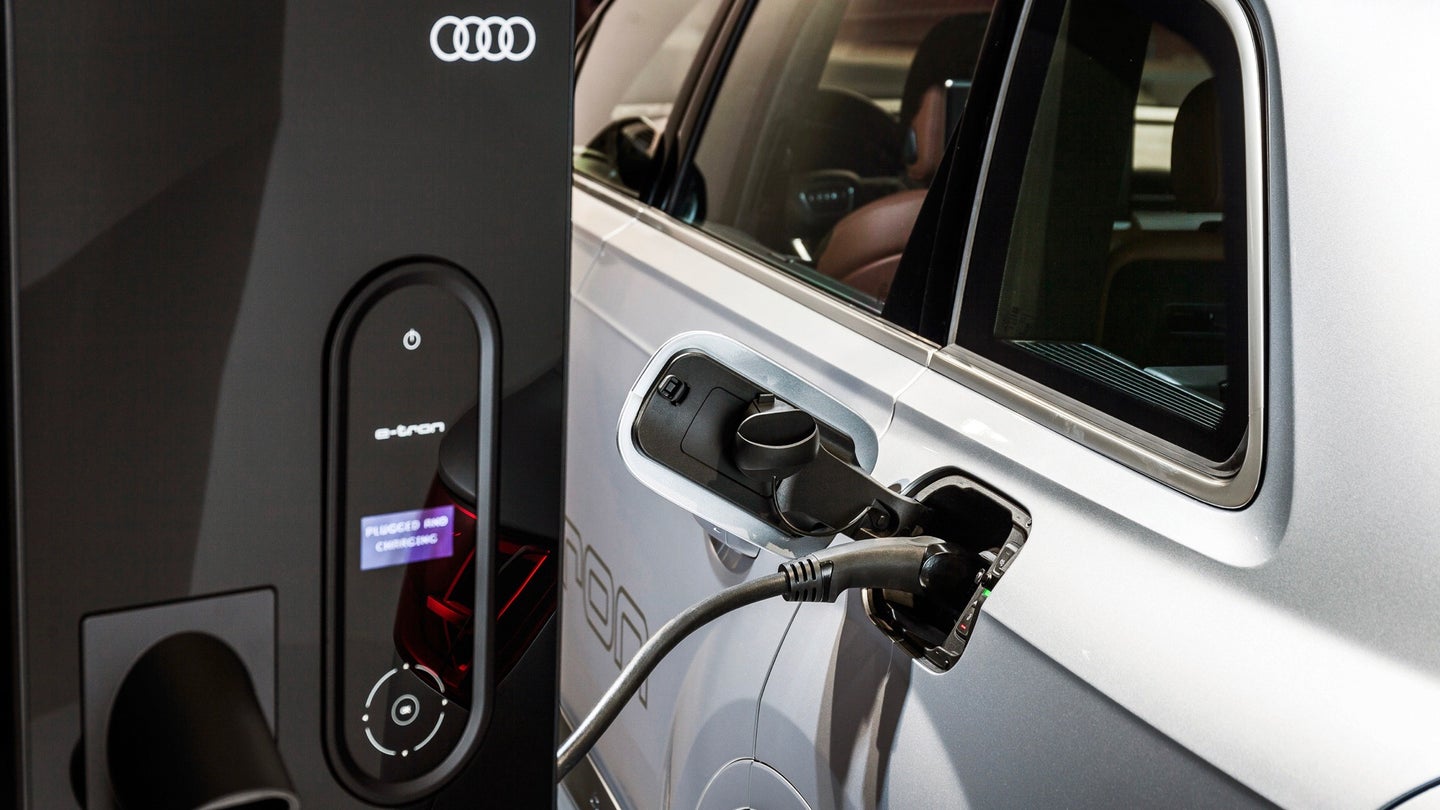Audi Links Cars to the Grid in Experimental ‘Virtual Power Plant’
But the ‘Audi Smart Energy Network’ is just a pilot project, for now.

In a similar vein to Nissan, Audi is experimenting with linking cars to the grid to create a so-called "virtual power plant." The goal is to remotely control the charging of electric cars or plug-in hybrids so they can absorb excess electricity from the grid during periods of low demand, and discharge it during periods of high demand.
That concept is being tested by Audi and startup Ampard under the "Audi Smart Energy Network" pilot program. The pilot involves households in Audi's hometown of Ingolstadt, Germany, and Ampard's hometown of Zurich, Switzerland. These households have solar panels, stationary energy-storage battery packs, and electric-car charging stations. All of that interacts with the grid using software supplied by Ampard.
The goal is to use car and energy-storage battery packs to help "balance" the grid. In normal use, electricity demand ebbs and flows unpredictably, putting considerable strain on the infrastructure. By storing excess electricity in battery packs and discharging it when demand picks up, energy-storage advocates believe utilities will be able to achieve that sought-after balance.
In addition to balancing the grid, battery packs allow both homeowners and utilities to get more use out of renewable-energy sources, like wind and solar. These sources can't generate power consistently, but when the wind is blowing or the sun is shining, they can also generate more power than is immediately needed. Battery packs can store that excess power for later use.
Audi says this experiment is about exploring different types of businesses beyond just selling cars. It's not the only automaker with this idea, Nissan is testing a similar "virtual power plant" system with a fleet of electric cars in Japan. The flow of electricity between cars and the grid is remotely controlled based on need.
Note that these systems require cars to be equipped to discharge power back into the grid, something most electric cars on sale right now can't do. In the United States at least, the regulatory situation is also a bit unclear. New rules may have to be written to govern how cars to send power back to the grid.
